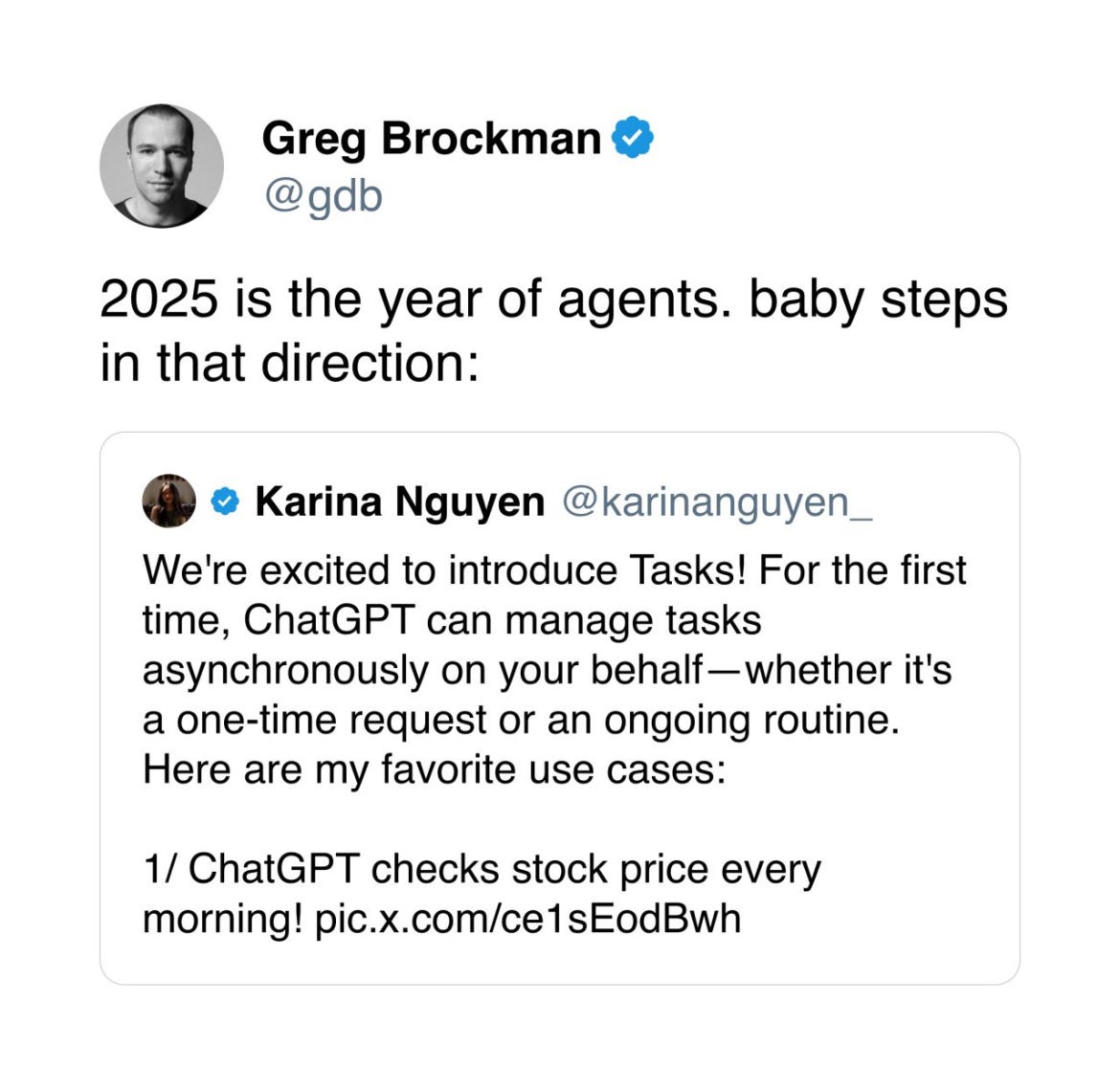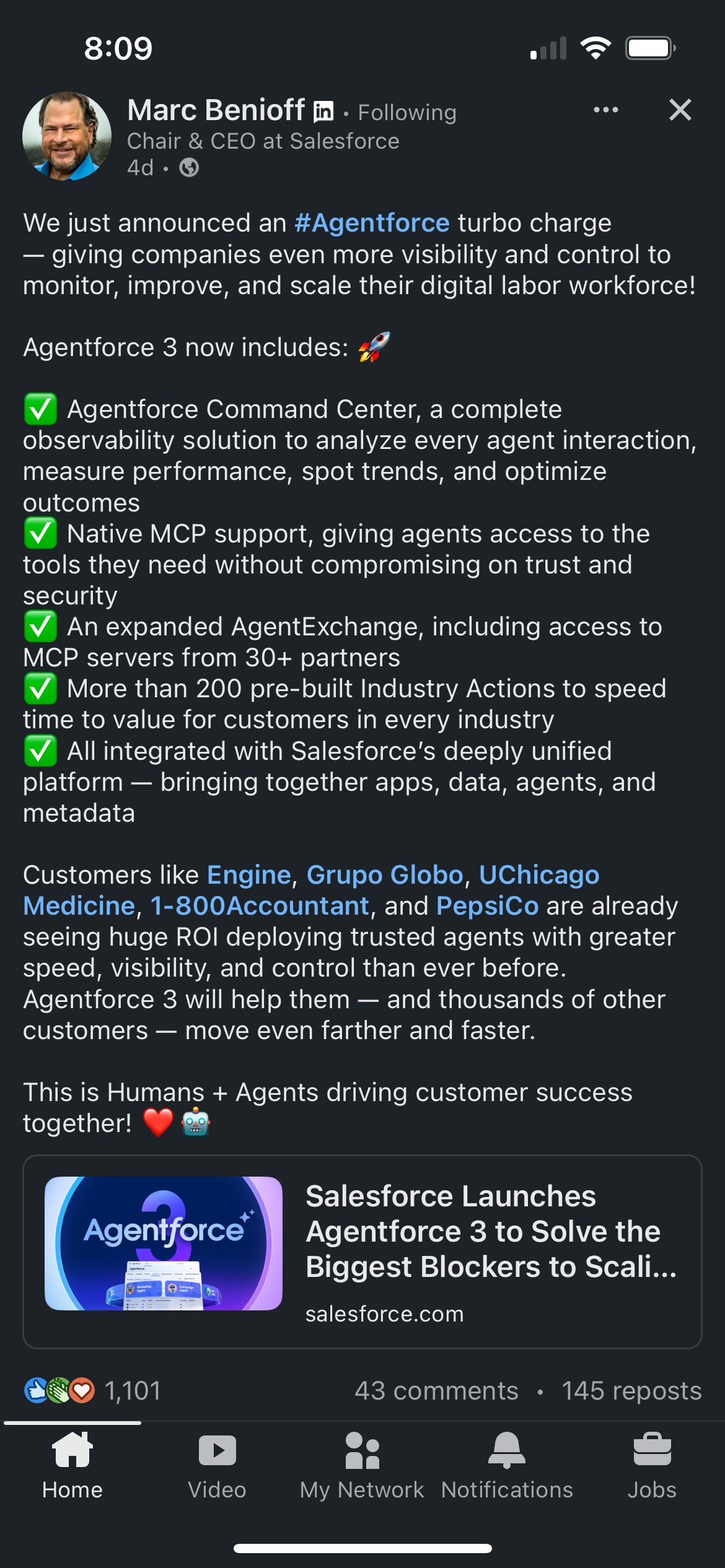🟠What Caught My Attention This Week
Curated insights on what I saw this week as it relates to Intelligent Products.
This week, I kept coming back to one quiet shift, intelligence is no longer something you add later, it’s something you build in from the start.
As someone building in this space, it’s a reminder that intelligence isn’t the “wow” moment anymore. It’s the foundation, the bar just quietly moved higher.
A - Artificial Intelligence
OpenAI Previews GPT-5
OpenAI’s CEO Sam Altman revealed that GPT-5 is expected to launch by summer. This isn’t just a routine upgrade it promises leaps in understanding and reasoning.
Why it matters: AI capabilities will keep improving in big jumps. Builders must be ready to adapt quickly as tools get smarter overnight.
Example: A customer support chatbot struggling with complex issues might soon handle them autonomously, reducing human escalations.
Meta Pours $14B into AI Infrastructure
Meta invested $14B to buy 49% of Scale AI, signaling the importance of strong pipelines and data preparation.
Why it matters: Future winners won’t just invent AI they’ll deploy it fast and reliably.
Example: Small teams might soon spin up AI features from raw data without needing full-scale ML teams.B - Business Intelligence
B - Business Intelligence
AI-Powered Analytics Take the Lead
Gartner named Oracle a BI leader thanks to embedded AI. Their platform answers natural language queries with visualizations.
Why it matters: BI is shifting from dashboards to AI-powered conversations.
Example: A manager can ask, “Why are conversions down?” and get instant, contextual analysis.
Databricks updated Unity Catalog lineage explorer
What: Users can now track more granular data lineage in real time.
Why it matters: Knowing where your data came from is the new currency of trust in BI.
Example: A retail chain tracks how a pricing recommendation for July 4th came from last year’s sales data and summer foot traffic sensors.
C- Customer Intelligence
J.D. Power Data Now in Snowflake
JD power customer behavioral insights are now available in real-time via Snowflake’s marketplace.
Why it matters: Fresh customer data is now easier to embed in models and tools.
Example: A finance app could spot churn patterns and proactively recommend better plans.
Cigna Deploys Virtual Agents
Cigna added AI assistants to its mobile app to answer care and coverage questions.
Why it matters: Users expect instant, intelligent help even in complex industries.
Example: A customer asks, “Is my PT covered?” and gets a clear, personal response, maybe even scheduling help.
Omnichannel AI Personalization Gets Real
LLMs are connecting app, web, and in-store data to personalize experiences.
Why it matters: The 360° view is now real-time and actionable.
Example: A customer who browsed phones online is greeted in-store with a demo setup waiting.
Physical Intelligence
Tesla reveals new multi-modal robot prototype for logistics
What: Tesla showcased a robot that can track objects by sound, heat, and movement.
Why it matters: Robotics is no longer about arms and legs. It’s about sensing and reacting intelligently.
Use case: A small warehouse uses these robots to move high-risk inventory like batteries more safely and efficiently.
Gemini Robotics On-Device
DeepMind launched AI that runs fully on the robot—no cloud required.
Why it matters: On-device AI enables faster, private, and more reliable action.
Example: A robot assistant at home can clean or alert users without an internet connection.
Humanoids in the Factory
Foxconn and Nvidia are piloting humanoid robots for real assembly line tasks.
Why it matters: Robotics is moving from R&D into real jobs alongside humans.
Example: A wheeled robot fastens cables and works night shifts, increasing efficiency and reducing human fatigue.
Data
Synthetic data tools are gaining favor post-privacy fines in EU
What: After the latest GDPR fines, companies are exploring synthetic training datasets.
Why it matters: You don’t need to wait to collect data anymore.
Use case: A bank uses synthetic loan profiles to train fraud detection models without touching real customer info.
Cloudflare Blocks AI Crawlers by Default
They’ll now ask site owners to opt in to AI data scraping.
Why it matters: Data access is no longer free; licensing and consent are becoming essential.
Example: A startup may need to license datasets it once scraped freely.
An Address Book for Physical Location
Overture releases global place ID system, each physical location can now have a unique, shared identifier.
Why it matters: Enables interoperability across mapping and review systems.
Example: A travel app can combine OpenStreetMap, Yelp, and Facebook data without messy translations.
Others
Google’s June AI Roundup – A look at the latest AI updates Google announced in June 2025, from new search features to on-device smarts. (Google Blog) – The latest AI news we announced in June
Microsoft says it’s AI diagnoses patients more accurately than doctors, that is a big move in the healthcare space.
A $100m dollar package to join Meta’s Superintelligence team, wow! Here is the list of talents poached by Mark Zuckerberg’s company Link https://www.wired.com/story/mark-zuckerberg-welcomes-superintelligence-team/
Googles AI hub for educators from from teachers, administrators to students link
Free practical guide to building an agents by OpenAI see link
My PoV
Overall, the week’s updates left me optimistic but reflective. As a builder, I’m struck by how quickly “intelligence” in products is shifting from this new technology that everyone was skeptical about to becoming a necessity. Not long ago, adding AI features felt cutting-edge, now it’s often expected.
What encourages me is seeing a balance between innovation and caution. On one side, we have breakthrough models and bold integrations, AI in everything from BI dashboards to badminton bots. On the other, there’s a growing alignment about doing it right be it Cloudflare drawing a line on data scraping or Altman acknowledging the trust factor with AI monetization with Ads.
This balance is exactly where I believe good products will flourish. We don’t want to be left behind as AI accelerates, but we also don’t want to rush something out that users later find creepy or hollow. (See my previous post on “How do you make a personalization that's real with impact and not creepy with Customer Intelligence”)







